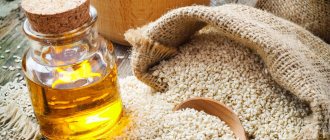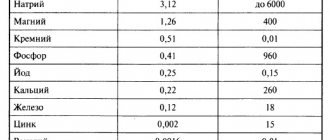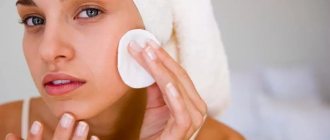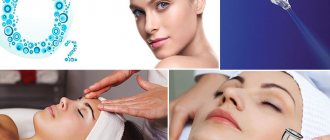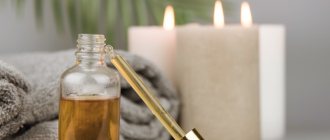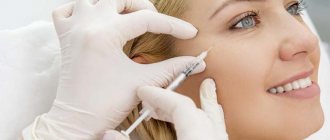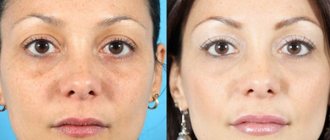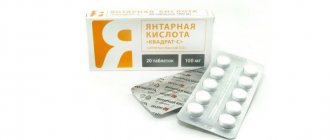Sulfur in the human body
Sulfur is a chemical element that is also found in our body as part of amino acids and sulfates. The mass fraction of this trace element in the human body is about 0.25%. Sulfur is involved in the formation of skin cells, so a lack of this mineral can lead to a decrease in skin elasticity and even premature aging. Lack of sulfur can cause excess sebum production. In this case, pustules form on the face. Moreover, sometimes sulfur deficiency in the body causes a weakened immune system and the appearance of allergic skin reactions.
Therefore, if you still think that sulfur has nothing to do with beauty and health, you should reconsider your views. Perhaps it is the solution to many of your problems.
Sulfur has many beneficial effects on facial skin. The effect is especially noticeable when its condition is far from ideal. Here are the main beneficial properties of sulfur :
- maintains oxygen balance in the skin, making it more elastic;
- the antiseptic properties of sulfur make it possible to suppress bacteria that cause rashes on the face;
- tightens pores, which reduces the likelihood of acne and blackheads;
- has an anti-inflammatory effect on pustular rashes, allowing them to mature faster;
- can have a mild analgesic effect on areas of inflammation;
- external use of sulfur on lesions can dry out small pimples;
- can be used as a peeling to remove the upper stratum corneum of the skin;
- The overall level of immunity increases when consuming sulfur.
As a result, when using sulfur for a short time, you will get clean and matte skin without signs of inflammation.
What are ceramides?
Ceramides are lipids that form the structure of the uppermost - stratum corneum - layer of the skin and take an active part in the formation of the hydrolipid mantle (protective barrier). It is ceramides that help the skin resist the aggressive effects of external factors and help moisture stay inside, making the skin look full and smooth.
Ceramides are a kind of building material for the hydrolipid barrier of the skin. Accordingly, a lack of ceramides can weaken the function of the skin's protective barrier, increase its vulnerability to environmental factors and provoke excessive moisture loss.
Indications for use
Where can you find this miracle remedy? You can get it in two ways: naturally, with food products rich in this element, and artificially, using industrial tablets and ointments.
Consumption of sulfur in food
Usually, the amount of sulfur that we consume every day, without even realizing it, is enough to ensure stable functioning of the body and keep the skin in good condition. The average daily intake of sulfur is 500-1200 mg. However, if you lead an active lifestyle or play sports, the norm may increase to 3000 mg per day. Therefore, if you have been bothered by a rash on your face, acne or other signs of unhealthy skin for a long time, this may indicate a lack of this microelement in the body.
In this case, you should eat more sulfur-containing foods , such as:
- chicken and turkey meat;
- chicken and quail eggs;
- cuts of pork and beef with a small amount of fat;
- beef and poultry liver;
- fish, especially cod, pike and sardines;
- seafood, including fish caviar;
- hard cheeses;
- processed cheese;
- milk;
- legumes;
- onion and garlic;
- cabbage;
- cereals and bakery products.
Who may have sulfur deficiency?
Sulfur deficiency can occur if there is not enough protein in your daily diet. However, there are other factors. At risk:
- professional athletes, especially those involved in strength training;
- people leading an active/extreme lifestyle;
- children and adolescents, as a growing body requires an increased daily allowance;
- vegetarians and vegans;
- women and men losing weight on special low-protein diets.
Symptoms of sulfur deficiency are quite noticeable:
- The skin becomes dry and covered with a network of small wrinkles and creases, although age does not yet suggest such changes.
- Excessive sebum production also indicates a lack of sulfur.
- The hair becomes dull and dry along its entire length, and the ends begin to split.
- Allergic reactions, including skin reactions, appear to foods that you have consumed without any problems before.
- You get tired faster, your muscles hurt even after a little physical activity.
- Blood pressure becomes higher and heart rate becomes faster.
- You suffer from problems with improper digestion and frequent constipation.
Any of these symptoms may indicate more serious problems than sulfur deficiency. However, a doctor-approved course of pills or other medications will not harm you.
Do not make up your own dosage. Before taking any drug, consult your physician or dermatologist.
However, you should not be afraid of an excess of sulfur in the body. For sulfur poisoning, you will need very high concentrations, which you cannot obtain using the drug according to the prescription. As a rule, poisoning occurs only with prolonged contact with gaseous compounds of the substance, such as hydrogen sulfide and carbon disulfide. Although taking a week's dose at one time can also become a serious problem.
Application of medical sulfur
Medical sulfur is used in two ways:
- as tablets for internal use;
- as ointments for external use.
You can use sulfur for facial skin in its pure form. To do this, you need to pre-order it at the pharmacy, since it is usually not available on the open market. However, currently the variety of ready-made certified preparations containing large amounts of sulfur is so great that it is not necessary to worry about the proportions and recipes for homemade solutions and ointments.
However, if you prefer to have complete control over the compositions and are willing to spend a little time creating the product yourself, you may need a recipe for the so-called “chatter” for the skin .
You will need 50 ml of boric acid, the same volume of salicylic acid (can be replaced with ethyl alcohol) and 7 g of medical sulfur. For greater effect, add 5-7 g of aspirin to the solution. All ingredients need to be shaken well. The mash should be stored strictly in a dark glass bottle and away from sunlight. Apply the mixture to areas of inflammation 1-2 times a day.
Buy all the ingredients for mash only in pharmacies, and not in hardware stores or supermarkets. Some pharmacies may offer you to prepare a similar product to order. Don't refuse: it will save you time and eliminate the risk of making a mistake in proportions.
You can also buy other products at the pharmacy: for example, sulfur soap is in great demand and gives a noticeable antiseptic and drying effect. Sulfur in tablets and granules is now produced by a large number of manufacturers. To choose the right course for you and determine the dosage, consult your doctor.
In order for the effect to be more pronounced and lasting, it is best to use sulfur comprehensively: combine internal use with external use.
Often, when girls start using sulfur, they believe that this product is not suitable for them and stop treatment. The fact is that the effect of sulfur begins with a negative reaction of the body: the face begins to become covered with a rash on an even larger scale, and peeling appears. A slight laxative effect may be observed. All these are not side effects or a consequence of individual intolerance. This is exactly the initial effect this product gives. The aggravation of problems is caused by an antiseptic and anti-inflammatory effect: all bacteria located in the deep layers of the skin are drawn out. The profuse rash gradually goes away and no longer bothers you.
With conventional treatment, other cosmetic preparations treat only that visible part of the problems that are on the surface of the skin, so old pimples and acne are replaced by new ones, and you do not notice any improvements. Sulfur helps to cope with all the accumulated volume of imperfections at one time.
And the laxative effect helps remove waste and toxins from the body. So if you notice such manifestations in yourself, you should not put the sulfur in the far corner. It is recommended to slightly reduce the dosage, but continue to use.
Features of different types of sulfur
If you are determined to start treating skin problems with sulfur, pay attention to the following facts:
- Earwax and medical wax are two different things. Among folk methods, there are often recipes using earwax, but the direct content of the element in it is extremely small. But earwax contains dust, bacteria and epidermal debris, which, when applied to open inflammations, can further aggravate the problem.
- The use of combustible sulfur should be agreed with a doctor. Only he can determine the required dosages.
- Homeopathic sulfur has a very low concentration of the substance, like all homeopathic medicines. It is better and cheaper to buy medical sulfur in its pure form.
- The use of ointments and mash on the face can give the skin a slight yellowish tint and an unpleasant odor. This goes away quickly, but it is better not to use sulfur-containing substances if you have to leave the house. The best time to use is in the evening after work and on weekends.
- The period of pregnancy and breastfeeding is a contraindication for the use of sulfur-based ointments. If you find yourself deficient in the substance during this period, consult your doctor about the appropriate dosage forms for you.
- Sulfur ointments should not be used on children under 3 years of age. This can cause excess sulfur, an allergic reaction and a host of skin problems.
Baneocin's analogs
Analogues of Baneocin ointment and powder are represented by medicinal products used for topical use (ointments, aerosols, creams, solutions): Bactroban, Altargo, Gentamicin, Chitosan-Gent, Levomycetin, Tyrozur, Sintomycin, Fusiderm, Neomycin, Supirocin, Fusicutan.
Figure 4 - Analogues of Baneocin
Baneocin or Levomekol?
Levomekol ointment is a combination drug that has antimicrobial, decongestant and immunostimulating effects. Baneocin is a combined antibiotic that has two dosage forms (powder and ointment). The compositions of Baneocin and Levomekol are completely different. Both drugs do not enter the systemic circulation.
Due to the content of two antibiotics in Baneocin, its action is broad and powerful, unlike Levomekol. But the latter contains components that affect the rate of tissue regeneration, which Baneocin does not have. Also, Levomekol quickly cleanses the wound of pus and exudate.
If the wound begins to become infected, but there is no or little discharge or pus in it, then Baneocin is used. If a lot of pus or necrotic masses have accumulated in the cavity, then the use of Levomekol will be optimal. If the burn is fresh and/or weeping, then Baneocin is used to prevent infection. In the presence of edema and/or slow tissue regeneration, Levomekol is prescribed.
And although their general effect is similar, each specific case of use of the drugs depends on the disease, its course and the presence of complications. Only the attending physician can give a recommendation for use.
